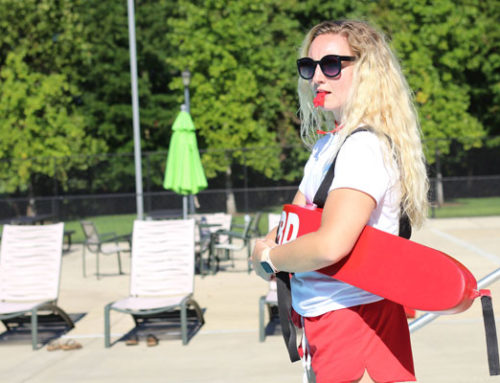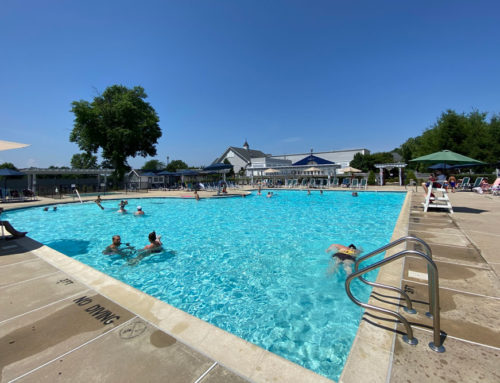
Some outlets are calling it “Pool-mageddon.” Others are panicking over “the end of summer as we know it.” But how accurate are these statements, exactly?
If you haven’t caught on yet, we’re talking about this summer’s chlorine shortage. What started as a supply breakdown for chlorine tablets has now ballooned into an all-out chlorine scarcity.
Because of this shortage, the price of Trichlor chlorine tablets has nearly doubled, and is only expected to rise throughout the summer as supplies continue to dwindle. Keep reading if you’re looking for answers as to why this is happening, or what you can do about it.
Background
In August 2020, Hurricane Laura caused a massive chemical fire that destroyed one of the largest Trichlor chemical plants in the country. Trichlor is a very popular chlorine option in the form of slow-dissolving tablets. The fire also destroyed some granular chlorine supply.
This would be stressful on any supply chain during a normal year. But because of COVID-19, 2020 and 2021 are so far from normal that the chlorine supply shortage was exacerbated by this chemical fire. Now, as consumers flock in droves to tablet alternatives — such as salt, liquid, ozone, and ultraviolet (UV) — those same chains are beginning to see strain. Even liquid chlorine storage containers are in tight supply.
This isn’t a new phenomenon. Of course, there’s a rise and fall; a give-and-take to supply and demand that occurs within basic economics. But our friend Mike Fowler at Pentair says this year’s supply difficulties go beyond the pale because of the pandemic’s compounding effect.
Fowler said, “What you have right now is a domino effect of total overall business due to production issues. For example, manufacturers had production lines minimized to six people when there were usually 12 people on the line.”
He’s clearly not alone — the entire industry has been affected not just by longer wait times for materials, but also higher demand.
Fowler offers a caveat. “It’s wonderful because we’re seeing a tremendous increase in business. But it’s tough because people are used to waiting on product for seven to 10 days, and now they’re waiting three to four months.”
When will the 2021 chlorine shortage end?
Fowler says it’s really hard to tell right now, and we agree.
“I don’t see this getting back to normal until maybe the 2022 pool season. I think a lot of people have learned a lot of things as a result of this, the chlorine shortage and COVID combined. If you were a pool operator who didn’t take the necessary steps to treat and care for your pool, then your wallet is probably feeling it this summer.”
While there should be a healthy stock of Trichlor available by next summer, supply has been extremely limited this year compared to previous summers.
The good news is that there are so many alleys toward sanitizing your pool that this doesn’t mean your summer is in the dumps just yet. The problem, however, is deciding which one is best for your pool.
What does this mean for my pool?
Since there isn’t much efficacy using chlorine tablets with large community pools, you’re probably feeling this chlorine shortage more if your pool is on the smaller side.
Ultimately, your decision will depend on these three factors:
- Your pool’s location (whether it’s on a rooftop, high rise, indoors, outdoors, etc.)
- Storage space for chemicals
- Budget
Pentair, which makes very popular Intellichlor salt chlorine generators, is noticing salt and salt systems fly off the shelves.
“As soon as everyone started hearing about it on the nightly news, salt became a big play as an option, along with UV,” Fowler said. “One of my good friends went to Lowe’s to get his pool salt last weekend. They normally have two or three pallets out. It was down to two or three bags.”
We’re big fans of salt chlorine because it offers a swim of amazing quality that you can feel, plus it doesn’t irritate your skin or sensory organs like other chlorine media can. But that doesn’t necessarily mean it’s right for your pool. Salt can also be a costly option for small- to medium-sized commercial pools, like those found in apartments and hotels.
But all is not bleak; whichever option you choose could end up being your pool’s sanitation solution for years to come. Ozone, for example, is another costly option; but it also works with a wide variety of pool sizes and construction materials. And while liquid chlorine is starting to run in short supply, there’s no practical reason to move away from it if you’re already using it in your pool.
COVID-19 taught us that adversity can force change and growth. Short-term problems often force change to generate feasible and convenient long-term solutions. It’s kind of like the opposite of buyer’s remorse, or buyer’s remorse in reverse. If you’re in need of a new chlorination system, let us know. We’ll be happy to help you figure out the best solution for your space and budget, so you can keep Poolmageddon at bay in 2021.





